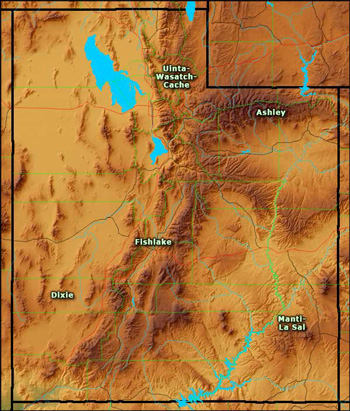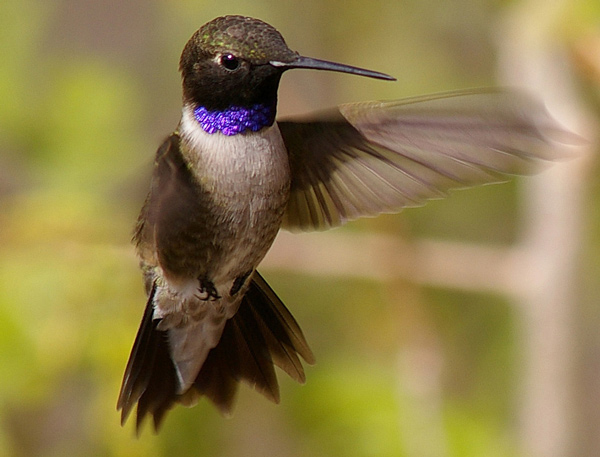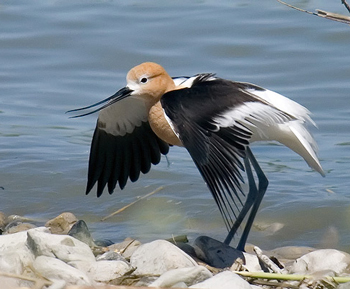|
April 2020
Contents
Monthly Meeting
Upcoming Field Trips
President's Message
Bird of the Month
Field Trip Reports
APRIL MEETING:
Thursday, April 9th, 2020, from 5pm to bed time.
In light of our current stay at home orders, and in the
interest of everyone’s health and safety we will have no April meeting. Instead,
I suggest a big backyard/neighborhood birding evening that everyone can join in
remotely from their own homes.
Thursday, April 9, 5pm-bed time. Stay home, stay healthy backyard birding big
evening.
See how many species you can see either from your house, or within your own
neighborhood on Thursday evening. This can be watching feeders in your yard, or
birding within half a mile (walking distance only!) of your house. If you do
venture away from your home make sure you’re maintaining good social distancing!
Report your total number of species and any interesting finds either on Facebook
or through our group listserve email
ucbirders@googlegroups.com.
Also you can enjoy this link:
The Audubon has put together a page called
the Joy of
Birds with lots of fun links to bird photos, articles, and
science.
FIELD TRIPS:
Enjoy birding on your own, maintaining the social distancing and
guidelines issued by the governor of Utah.
President's Message -
April 2020
by Machelle JohnsonSo,
here we are in quarantine, Stay Home, Stay Safe. What are you doing to stay
positive and busy? Are you working from home, still able to go in to work, not
working but wish you were? Working but wish you weren't??
Things are changing every day due to the corona virus. Please do all that you
can protect yourself and others during this time. We are advised by our Governor
to stay at home, we are advised that State Parks are open for now but only for
those who live in the county the park is in. We're gonna have to get creative
for birding now!.
There are still many things that we can do, even while practicing social
distancing, for the 2020 challenge, here is a link to the challenge in case you
still need it:
2020 Challenge (pdf)
#8 - Bird your yard for 20 minutes on 20 different days
#9 - See 20 species at 20 National Forests areas or Wildlife Refuges. It may
be awhile before you can visit these areas, but here is some information on
where they are:
The 5 National Forests within the state of Utah are:
|

Utah's National Forests
|
- Ashley National Forest.
- Dixie National Forest.
- Fishlake National Forest.
- Manti La Sal National Forest.
- Uinta-Wasatch Cache National
Forest.
Link to National
forests in Utah
Here is a link for information about
Wildlife Refuges in
Utah,
again, it may be awhile before you can visit these areas but here is a link
with information:
#16, 17, 18, 19-See 20 kinds of waterfowl, shorebirds, warblers, sparrows.
Study up on these groups to learn about the birds in each one. Cornell's "All
About Birds" website is a great resource, as well as the various field guides
that are available, I'm sure you all have one or two.
.
Keep in mind that:
>Plovers, Sandpipers and Gulls are all considered shorebirds.
>A lot of the warblers 'wander', and end up in Utah for brief periods, watch
hotline reports.
>Junco's, Towhee's and the Lark Bunting are in the sparrow family.
(This isn't complete, and I don't have all the answers about "what is
considered' waterfowl, shorebird, etc. If you have questions send me an email
and I'll get clarification for you,
machelle13johnson@yahoo.com.)
See below for the Utah Checklist.#33 - See 20 species in 20 different trees or shrubs. Study up on trees and
shrubs so you'll be able to identify them once they leaf-out and are filled
with birds.
Here is a link that might be helpful:
Tree Identification in Utah | Forestry
All in all, I hope you are doing well and staying healthy and sane. It is
great to see your photos on the face book page, please keep posting, even
photos from past outings are welcome! We can't meet together but we can stay
virtually connected!
Here is a link to live feeder cams that are fun to watch when you can't
actually get out:
Bird Feeder Cams:
Happy (Virtual) Birding,
Machelle Johnson
|
|
|
BIRD OF THE MONTH:
|
Black-chinned Hummingbird
(Archilochus alexandri)
by Tori Shirley
|
 |
|
Black-chinned Hummingbird -
male |
Black-chinned Hummingbirds live
in multiple habitats from central Mexico to the south-western corner of Canada.
In Utah they are common in low lands and low mountains. Male Black-chinned
Hummingbirds have an especially dark colored band around their necks and
sometimes when light hits
directly it seems purple or dark amethyst. Female Black-chinned Hummingbirds
have no band around their necks. Both are a dull green color on their backs and
have a medium to long, slightly decurved bill. Their song is rarely ever heard,
but when heard it sounds like a high pitched warble. Their call is a soft tchew.
This species was named in 1846 in honor of its discoverer, Dr. Alexandre of
Mexico. These birds are migratory. Like most Hummingbirds they have about 1,000
feathers, they eat five to eight times in one hour, and can fly in any direction
including upside down or can hover. Black-chinned Hummingbirds are tolerant of
human activity and will come to bird feeders with sugar water. They also eat
small insects.
I like Black-chinned Hummingbirds because I
love hummingbirds and Black-chinned Hummingbirds are common at my house. I
haven't seen one yet this year, but me and my dad looked at Ebird and they
arrive in Utah County around April 19th (my birthday!) and April 26th. By the
way, they leave Utah County around the end of September. According to Ebird,
Suzi Holt has the latest record of them being in Utah County on October 12th.
Spring is on its way so keep your eyes out for these speedy little birds!
|
|
|
Utah Bird Checklist Update
|
|
The Utah Bird Records Committee has modified the code system
and updated the
Utah Bird Checklist so
it's up-to-date.
The code system for the Bird Checklist
for Utah has been simplified removing the "Fairly Common" and the
"Irregular" categories from the "Abundance Codes" and "Provisional species"
and the "Northern Utah" designations for the Status Codes. All codes were
reviewed and updated where appropriate.. The names and order of the birds
are according latest version of the American Ornithological Society
checklist.
Since the 2018 checklist, four new species (Pacific-slope Flycatcher,
Dusky-capped flycatcher, Blue-footed Booby and Great Black-backed Gull) have
been added to the checklist and one has been removed because of a species
merge. (Thayer's Gull is now a subspecies of Iceland Gull), making a total
of 465 species on this checklist.
The following versions and related lists are
available:
-
Website Version
-
Printable Version (pdf)
-
Taxonomic List
(pdf)
-
Review Species List
-
Auxiliary
Lists * The DWR was planning
to publish a checklist in time for the Utah Lake Festival, but there is no
word if that has changed because of the pandemic. You can check at the
main building of the Utah Lake SP to see if the checklists are available. |
| |
|
|



